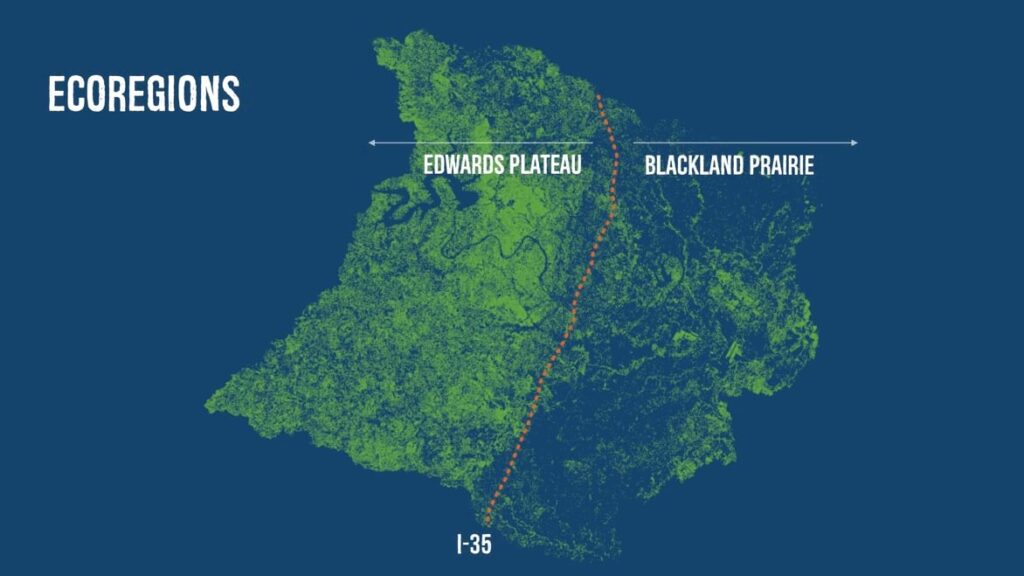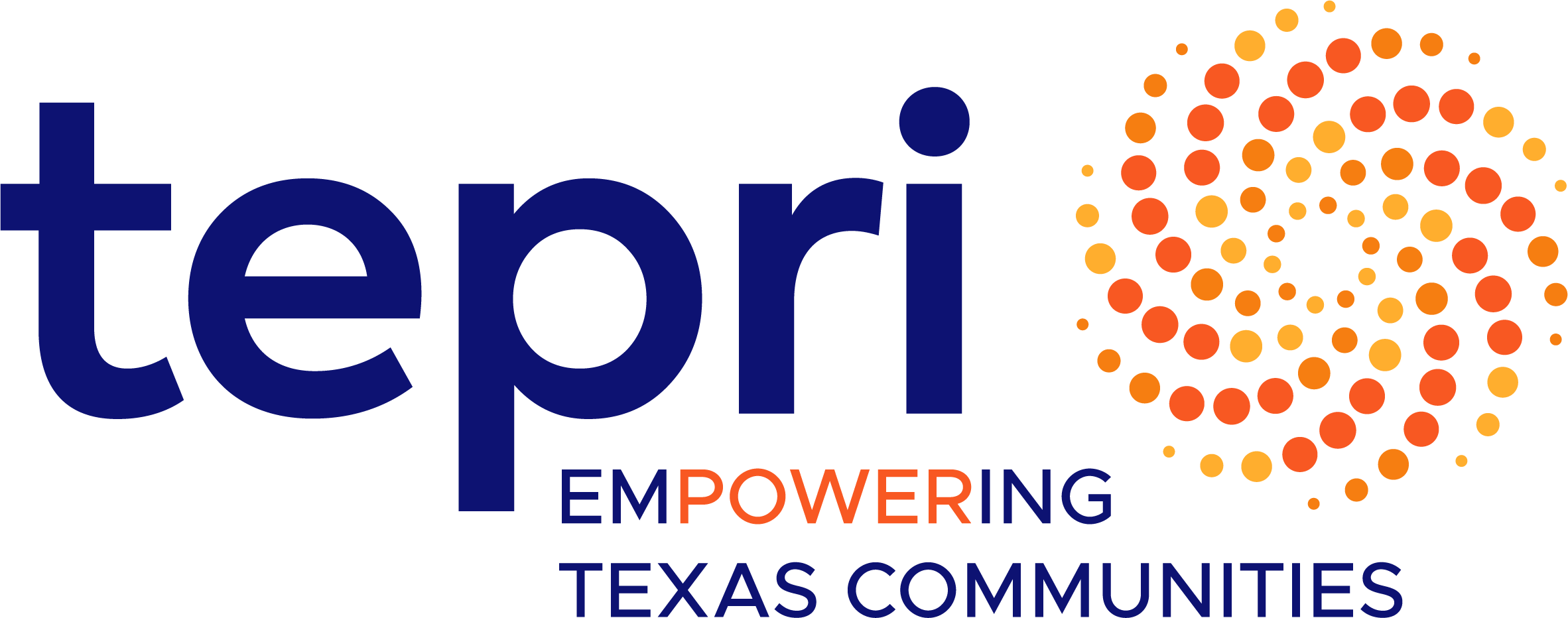
As temperatures are starting to rise and wildflowers are in full bloom here in Central Texas, it is hard to think back to the winter weather that blanketed much of Texas with ice in late January and early February of this year. The storm hit the state two years after Winter Storm Uri, again leaving hundreds of thousands of Texans without power during a wide-sweeping winter weather event. While the conditions around this storm (Winter Storm Mara, as it came to be known) were much different from Winter Storm Uri in 2021, many families were understandably left reliving old memories of past experiences and again questioning the state of energy infrastructure in Texas.
Although the bulk of the storm’s impact was concentrated in North and Central Texas, Governor Abbot declared a state of emergency in 24 affected counties across the state as many Texans were left without power and access to communications for days. Families across the region incurred home and property damage and were once again forced to live with uncomfortable and cold indoor conditions, putting vulnerable Texans at risk. The power outages that occurred during this storm, unlike during Winter Storm Uri, were largely caused by localized distribution line issues, including breakages as a result of ice accumulation on trees.
Following up on TEPRI’s Lived Experiences of Winter Storm Uri blog post and the When the Lone Star Froze Over report, our research team wanted to see how Winter Storm Mara impacted families across the disaster declaration areas and how people fared this time around – two years after our last major storm. Our team conducted a short survey of 608 Texans from across the 24 declared disaster counties to better understand the storm’s impacts on residents from different socioeconomic backgrounds. Below you’ll find some of the key takeaways from the survey and how the storm’s impacts differed from 2021.

Power Outages
With different drivers of power outages during this storm, we wanted to first see how families of different income groups were impacted by power outages. Of those who responded to the TEPRI survey, households with higher incomes were more likely to have experienced a power outage (Figure 1). Unlike during Winter Storm Uri, which caused outages mainly at the power generation level, Winter Storm Mara left Texas trees and other tree canopy growth covered in a layer of thick ice, causing trees to buckle under the pressure. The area’s live oaks, ashe junipers, and cedar elms could not handle the weight of the massive amounts of ice, which caused the trees to snap, break, and bring down power and communication lines with them.
The survey findings suggest that regions with high tree cover were more likely to have experienced a power outage from fallen power lines. Furthermore, these regions with high tree cover may not be properly pruned and maintained. Typically, pruning and maintenance of trees near power lines are the responsibility of local utilities. There are, however, cases in which residents are responsible for trimming trees that are not in utility easements but are close enough to power lines to fall on them during storms. This can be a costly endeavor for many residents and may often be neglected without additional oversight.
In addition to split responsibilities between utilities and residents, there are also other barriers that can prevent a tree near a power line from being pruned or cut. Measures to prevent disturbing bird habitats, to mitigate the spread of fungal disease, or even just concerns about aesthetics can delay or disrupt tree pruning by utilities. A spokesperson from Austin Energy, for instance, noted that “between 40% and 50% of Austin homeowners delay the utility’s trimming work with questions or disputes about trimming plans.”
With a better understanding of the responsibilities and barriers around tree trimming for utility lines, we can now look back at the differences in outages among different income groups of respondents. To fully grasp this trend, it is also very important to consider the disparities in tree coverage in neighborhoods inhabited by families of different socioeconomic groups.

For example, the tree coverage in Austin, which was severely impacted by Winter Storm Mara, differs widely depending on which part of the city one lives in. Those living in the western, predominately white and higher-income part of the city (west of Interstate 35) as shown in Figure 2, tend to have much more tree coverage compared to those living in the eastern, low-to-moderate income, and much more racially diverse part of the city. These trends are often replicated in cities across the country where redlining practices were common, relegating communities of color to less desirable areas where urban tree canopies were not maintained or expanded.
In the case of Winter Storm Mara, although lower-income respondents were more likely to be spared from the relatively short-term outages caused by downed trees and branches, the trend further illuminates the disparities in tree coverage among lower income communities and communities of color. Greater tree coverage can have incredible benefits on communities: creating fresh air, reducing pollutants, creating shade (resulting in better living conditions and lower energy bills), as well as generally improving health, quality of life, and aesthetics in the area.

Outage Duration
Diving deeper into outage duration by income group, we can note that not only were outages concentrated in the higher income levels, but those in middle-to-higher range income brackets also experienced longer outages compared to their lower-income counterparts (Figure 3). Reporting during the storm revealed that cities and utilities were overwhelmed by the scale of localized outages, with some residents left without power a week after the storm. Of the survey respondents that experienced outages, the average outage was between 2 and 3 days – which was exacerbated by impassable roads and cold temperatures.
Storm Awareness
Many Texans were caught off guard during Winter Storm Uri in 2021, which left households unprepared to withstand extreme cold temperatures and without adequate access to backup sources of food, water, and heat. The Texas Division of Emergency Management failed to utilize an SMS emergency alert system to let people know to prepare for the storm, leaving many unaware that the storm was even coming. Two years later, with outages during Winter Storm Mara lasting up to a week (or even more), we wanted to measure the level of awareness people had of this storm this time around.

The responses from the survey suggest a relationship between income group and the awareness of Winter Storm Mara. Lower-income respondents were less likely to know that the storm was coming, meaning they were less likely to take the proper precautions or seek assistance from elsewhere ahead of the storm. Lower-income households often have fewer resources at their disposal to prepare for such events, particularly for those who have other underlying medical conditions or disabilities. The disparity of awareness among income groups also points to a potential need to improve communication channels to ensure that all community members can be reached.

Preferred Notification Method
In Austin, the area hit worst by the storm, the city failed to use its text alert system to provide details about the storm’s risks and how long residents were estimated to go without electricity. Although the storm began Tuesday night, officials from Austin Energy said they opted to wait until the following Thursday morning to utilize the text alert system due to “the fluidity of the situation.” Austin Energy’s online outage reporting tool also crashed Wednesday evening, leaving many residents without an avenue to report outages in a timely manner or seek estimates on when they would have power restored.
Beyond Austin, there was a clear need to improve communication practices between public agencies, utilities, and customers. Roughly half (~48%) of all survey respondents preferred to receive a text from state or local emergency response agencies before and during an extreme weather event to let them know about potential power outages and other impacts. About 27% indicated that they preferred text messages from their electricity utility, with roughly 17% preferring radio or TV broadcasts and around 7% preferring social media notifications. Although the overwhelming majority preferred to receive notifications via text message (either from state or local emergency response agencies or their utility), the breadth of communication preferences indicates that people receive information through different channels in the face of an emergency. As such, utilities, state, and local agencies should work to improve and harmonize communication channels in order to provide residents with timely, accurate, and preventative notifications ahead and during major weather events.

Access to Backup Sources of Energy
For respondents with lower and moderate incomes, many also lacked access to backup sources of energy. Adoption of backup sources of electricity (generators and battery storage) were extremely low among the lowest income groups, with adoption increasing with higher incomes (Figure 6). Access to backup heat differed somewhat among survey respondents, but were still quite low considering the overall population. The relatively low access to backup energy sources further indicates the importance of early warnings about extreme weather events. These notifications allow households – when possible – to seek alternative arrangements or shelter, make accommodations with employers, and acquire necessary provisions like water, food, or medicine. Improved notifications also allow nonprofits and other relief agencies to better coordinate their resources and deliver services to households in need.

Figure 7 – Impacts by Income Category: This graph depicts the personal impacts experienced by respondents as a result of Winter Storm Mara, separated by income groupings.
Looking Ahead
Two years after Winter Storm Uri, electricity infrastructure across Texas was once again put to the test as cold temperatures, wind, and ice blanked communities across the state. While the circumstances surrounding power outages were different during this storm, many community members are still left wondering what happened and how these types of outages can be avoided in the future.
This community impact survey opens a narrow window into how Winter Storm Mara impacted households across different income groups in the affected communities, illuminating not only differences in experiences among respondents, but also bringing a greater focus on some of the other systemic inequities that have shaped low and moderate income communities across the state. TEPRI’s upcoming Community Voices in Energy Survey (CVES) statewide and regional reports will help to further supplement the perspectives of families with low and moderate incomes across the state, helping to inform and shape discussions around energy equity, affordability, reliability, and access to clean sources of energy.

